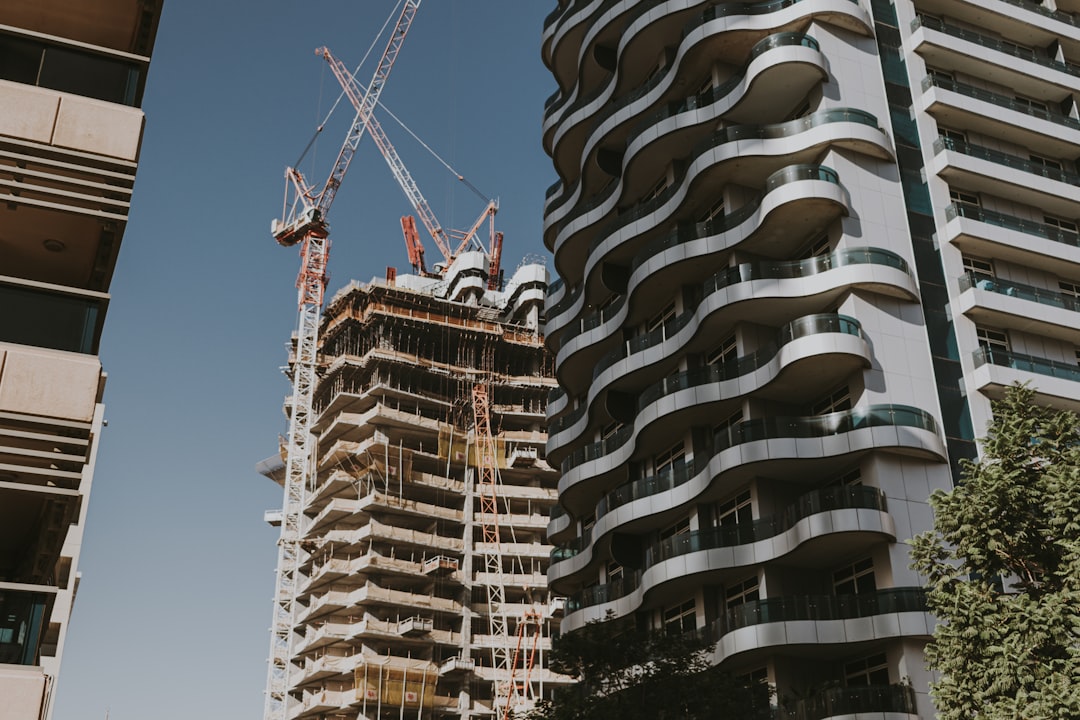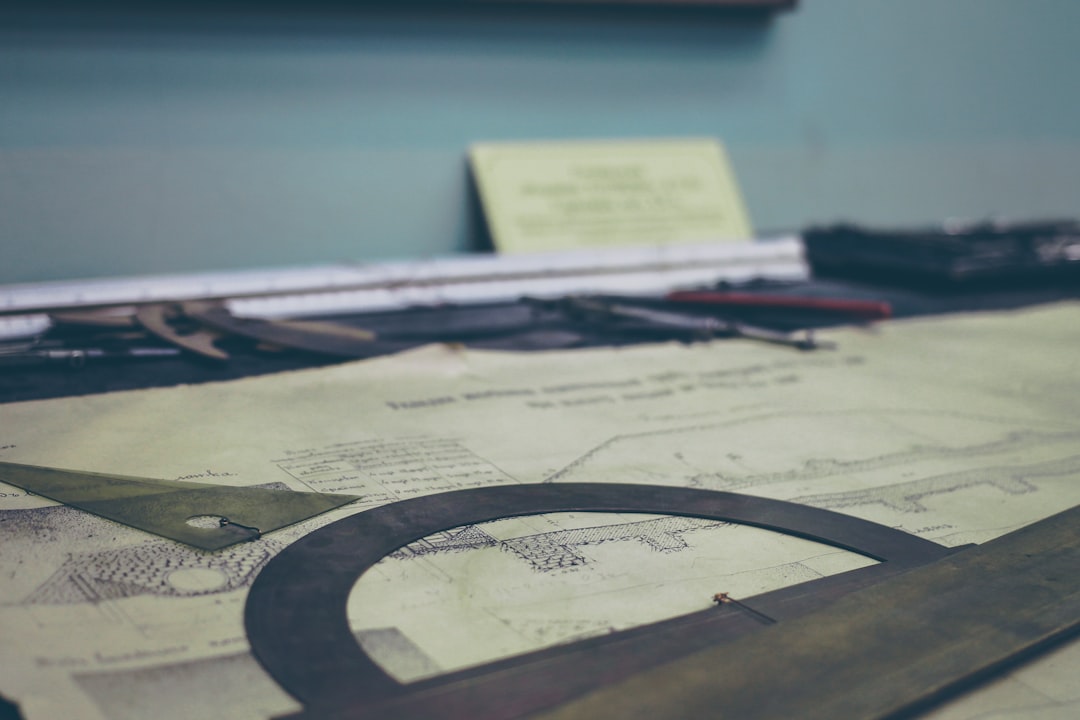Optimizing Grade Beam Design in RISAFoundation Balancing Efficiency and Performance
Optimizing Grade Beam Design in RISAFoundation Balancing Efficiency and Performance - Understanding Grade Beam Functionality in RISAFoundation
RISAFoundation offers an intuitive interface for modeling grade beams. You can choose between using beams or small slabs to represent your grade beam. The software cleverly automates the creation of soil springs, which saves time, especially for large projects. However, you should be cautious when modeling individual grade beams as this might lead to rotational instability. RISAFoundation's design checks are compliant with various building codes, ensuring thorough structural analyses that cover multiple design scenarios. This multifaceted approach makes it a valuable tool for designers seeking a streamlined workflow that incorporates code-based safety standards.
RISAFoundation offers a compelling approach to modeling grade beams, using either beams or small slabs. While the software excels in handling larger systems, it's worth noting that modeling a single grade beam can potentially lead to instability issues, particularly regarding rotation. This is a point that requires careful consideration. RISAFoundation's adherence to various codes, including ACI 318, EuroCode EC2, and CSA A233, provides assurance regarding code compliance. The software's integration with RISA3D and RISAFloor streamlines the optimization process for gravity, lateral, and foundation systems. While RISAFoundation effectively supports the design of slabs, footings, beams, and retaining walls, I'm curious about the granularity of detail in the graphical and report outputs. Are they sufficient for thorough verification and detailing? RISAFoundation's graphical modeling environment for slab-on-grade design appears intuitive, but I'd like to know more about the flexibility and control offered in adjusting the size and shape of Design Strips for reinforcement design. The automation of internal force cuts, while useful, prompts the question of how user-friendly the customization process is. While the rebar scheduling and DXF export capabilities are beneficial, I'm interested in exploring the software's ability to handle complex rebar arrangements and integration with third-party detailing software. RISAFoundation's capabilities in solving and optimizing various foundation systems, including mat foundations, grade beams, pile caps, and isolated spread footings, are commendable. However, it's essential to evaluate the software's performance in handling real-world complexities, such as varying soil conditions and complex loading scenarios.
Optimizing Grade Beam Design in RISAFoundation Balancing Efficiency and Performance - Key Parameters for Efficient Grade Beam Design
Key parameters for efficient grade beam design lie at the intersection of geometry, material selection, and optimization techniques. Understanding how a beam's shape and the materials it's made of influence load distribution is crucial. Optimization strategies, which often involve adjusting the beam's depth and the type of steel used, allow for designs tailored to specific project demands, striking a balance between strength and cost. Importantly, the incorporation of numerical methods and mathematical models is essential for ensuring accurate and efficient designs. This combination of informed optimization and rigorous analysis is fundamental to creating effective grade beams that meet both performance standards and regulatory requirements.
Optimizing grade beam design within RISAFoundation requires careful consideration of various parameters that impact both efficiency and performance. While the software provides valuable tools for analysis and modeling, there's always room for deeper exploration and critical evaluation.
Firstly, material choice plays a crucial role. Using high-strength concrete can significantly reduce beam size and enhance load-carrying capacity, but this must be balanced against the cost and availability of such materials. The interaction between the grade beam and the surrounding soil also needs careful consideration. Soil type, moisture content, and even temperature fluctuations can influence the beam's performance. It's tempting to go for complex geometries, but often simpler designs prove more efficient in terms of stability and stress distribution.
Understanding the load path through the beam is essential. Optimizing this path can reduce deflection and stress, but this might involve re-evaluating the beam's placement and reinforcement layout. Dynamic effects, such as those caused by seismic activity, must be factored into the design. Grade beams need to withstand lateral forces effectively, which may require different reinforcement strategies compared to those designed for static loads.
Finite element analysis in RISAFoundation can provide detailed insights into stress distributions that traditional analysis may miss, potentially leading to more efficient designs. However, construction tolerances are a critical factor. Even minor deviations during construction can negatively affect a grade beam's performance. Therefore, designing with these tolerances in mind is essential for long-term stability and integrity.
Lastly, the grade beam's performance is influenced by its integration with other structural systems. Poor coordination between systems can lead to weak points, highlighting the need for interdisciplinary collaboration. Understanding the limitations and potential for retrofitting existing grade beams is an important aspect of sustainable design. Ongoing research and development in materials and reinforcement techniques can enhance the performance of older structures, potentially avoiding full replacements. Exploring these areas promises significant advancements in optimizing grade beam design.
Optimizing Grade Beam Design in RISAFoundation Balancing Efficiency and Performance - Integrating Soil Conditions into Grade Beam Modeling
Accurately integrating soil conditions into grade beam modeling is essential for any successful foundation design. RISAFoundation provides a helpful tool for this, automating the creation of soil springs to handle variations in soil characteristics across the foundation system. However, there are potential drawbacks with the software's approach, particularly when focusing on single grade beams. The modeling process can lead to rotational instability. Thankfully, RISAFoundation provides formulas for calculating moments that occur due to sinking supports in grade beams, which helps compensate for variations in settlement, allowing for adjustments to account for soil inconsistencies. It's clear that a thorough understanding of how soil interactions affect structural performance is critical to creating optimal grade beam designs.
Integrating soil conditions into grade beam modeling in RISAFoundation presents a compelling challenge. While the software provides useful tools for automating soil spring generation, a deeper understanding of the complexities of soil behavior is crucial for achieving reliable and accurate results.
Soil properties are anything but uniform, presenting variations in cohesion and friction angle that can influence a grade beam's response to loading in unpredictable ways. It's essential to rely on meticulous soil testing and accurate modeling to capture these nuances. Overlooking potential settlement due to soil consolidation and compaction could lead to unexpected movements and potentially compromise the structural integrity of the beam over its lifespan.
The interaction between the grade beam and the surrounding soil is a dynamic interplay. The soil's stiffness, often underestimated in preliminary designs, plays a significant role in the overall stability of the beam. We must be cautious about assuming soil is a passive element, as it can exert significant lateral forces, influencing the beam's design.
It's not just about static forces; the impact of temperature fluctuations on soil moisture content can have a profound influence on both construction practices and long-term performance. Thorough analysis considering the thermal effects on soil is a crucial aspect of designing reliable grade beams.
I'm intrigued by the potential of geophysical techniques like seismic refraction for revealing hidden information about the subsurface. This can provide valuable insights that could significantly enhance the accuracy of the modeling process, leading to more informed design decisions.
While the automated soil spring generation in RISAFoundation is convenient, we need to be mindful of the assumptions behind these models. Validating these assumptions against real-world testing is essential to ensure accurate predictions of structural performance. The load redistribution between the beam and the soil is an interesting area of study. It's not just the beam's own behavior that's affected, but also the interaction with adjacent structures. Understanding these complex dynamics can lead to optimization for the entire foundation system.
Pore pressure in saturated soils can introduce a significant variable, influencing the effective stress beneath the beam. This requires careful consideration of potential hydrostatic pressure, particularly during periods of heavy rainfall, to prevent potential structural failures.
Integrating soil conditions necessitates the inclusion of additional performance metrics beyond the usual RISAFoundation evaluations. Factors like soil-structure interaction and the dynamic response to loading deserve more attention and a comprehensive framework for analysis.
The reality of construction is that we often encounter mixtures of soil types and unpredictable anomalies, such as voids or buried debris. Modeling these complexities effectively is vital to mitigate the risk of unexpected performance issues during and after construction. It's a reminder that the modeling process needs to be flexible and adaptable to the realities of the site.
Optimizing Grade Beam Design in RISAFoundation Balancing Efficiency and Performance - Optimizing Reinforcement Layout for Maximum Performance
Optimizing reinforcement layout for deep beams is crucial for maximizing performance without compromising structural integrity. Evolutionary optimization techniques offer a promising avenue for achieving a more balanced distribution of stress, which translates to a more efficient overall design. However, the challenges associated with deep beams arise from the need to balance multiple performance criteria, including load-bearing capacity and material usage. While software like RISAFoundation provides detailed analysis and helpful visual outputs, questions remain regarding its capacity for handling the complexities of reinforcement scheduling and the flexibility for user-driven customization. Therefore, ongoing advancements in optimization strategies are necessary to better align reinforcement layouts with real-world structural demands and improve predictive accuracy.
Optimizing the layout of reinforcement within a grade beam is a fascinating challenge, especially when you consider its impact on load distribution and overall performance. The placement of rebar isn't just about meeting code requirements; it's about strategically distributing strength where it's needed most.
A key consideration is the interaction between the grade beam and the soil. We can't simply ignore the fact that soil stiffness varies, leading to uneven settlement. Designing a reinforcement layout that accounts for these differences is crucial to prevent localized failures and maintain structural integrity over time.
Another important aspect is the response to dynamic loads. Seismic activity or even wind loads can create significant lateral forces. A balanced reinforcement layout is key here to ensure the beam can handle these forces without buckling or overturning.
The beauty of simulation techniques like finite element analysis is that they allow us to visualize the impact of different reinforcement layouts on stress distribution within the beam. This level of insight allows for optimization that balances safety and performance with material costs.
The depth of the beam also plays a role. While increasing depth reduces deflection, it also provides more space for strategic placement of rebar in high-stress areas. This optimization allows us to achieve greater load-carrying capacity while minimizing material usage.
There's a growing interest in alternative reinforcement materials like fiber-reinforced polymers (FRP), which offer lightweight, high-strength solutions. These materials can be particularly beneficial in situations involving corrosion or retrofitting.
And let's not forget thermal expansion. Considering temperature variations in the reinforcement layout can significantly prevent structural issues in the long run, helping to extend the life of the system.
There's definitely a lot to consider when optimizing grade beam reinforcement, but it's a field ripe with opportunities for innovation and improvement. With a focus on incorporating the latest in material science, simulation techniques, and construction best practices, we can design grade beams that are not only structurally sound but also durable and efficient.
Optimizing Grade Beam Design in RISAFoundation Balancing Efficiency and Performance - Balancing Cost and Structural Integrity in Grade Beam Design
Balancing cost and structural integrity in grade beam design is a constant balancing act. While using strong concrete can save money by allowing for smaller beams, we need to think about how expensive and readily available it is. Engineers are using new tools like advanced computer modeling and performance-based designs to make sure grade beams are both safe and affordable. We can't forget about the soil, though. It can greatly affect how the beam stands up over time. So, we need to know how the ground behaves and how the beam will react to changing loads. To make great designs, engineers need to carefully consider every aspect and choose the right solution.
The balancing act between cost and structural integrity in grade beam design is a fascinating and often complex challenge. It's not just about achieving a certain strength, but about doing so efficiently, without unnecessary material waste or over-engineering.
Increasing the depth of a beam can boost its load-carrying capacity and reduce deflection, but it also adds weight and cost. This tradeoff needs careful consideration. High-strength concrete can reduce the size of a beam, requiring less material and potentially even less reinforcing steel. This seems like a win, but such materials can be expensive, so the financial implications need a thorough evaluation.
Soil stiffness is not a constant factor. If we assume it's uniform, we can make significant errors in analysis. Rigorous soil testing is essential to capture those variations and ensure the beam can handle the loads properly. Static loads are just the beginning. Dynamic forces from wind, seismic activity, or even heavy equipment need to be accounted for to avoid structural failures.
Finite Element Analysis (FEA) is a valuable tool for optimizing reinforcement layout. It allows for more iterative analysis and lets us see the impact of different reinforcement arrangements on stress distribution. This can lead to safer and more efficient designs. Pore pressures in saturated soils can impact the effective stress beneath the beam, particularly during periods of high rainfall. This needs to be modeled carefully to avoid unexpected failures.
Construction tolerances may seem like a minor factor, but they can significantly impact performance. Designing with these in mind can ensure the integrity and longevity of the beam.
The interaction of the beam with adjacent structures can lead to complex load redistribution. Failing to account for these effects can create structural weaknesses, especially in dense urban environments.
Thermal effects on reinforcement are not to be overlooked. Fluctuations in temperature can cause expansion and contraction, which can affect the bond between rebar and concrete, impacting the stability of the beam. While RISAFoundation provides tools for reinforcement layout, the level of customization available may impact our ability to fully optimize the design. This constant push to develop software that meets specific project needs and allows for flexibility is an important area of ongoing research and development in structural engineering.
Optimizing Grade Beam Design in RISAFoundation Balancing Efficiency and Performance - Leveraging RISAFoundation's Graphical Interface for Grade Beam Analysis
RISAFoundation offers a user-friendly graphical interface for analyzing grade beams. You can choose to model them as beams or small slabs, with the software automatically generating soil springs, which can be especially helpful for large projects. However, when modeling individual grade beams, potential rotational instability is a concern. The latest version, v16, boasts enhanced graphical tools, leading to greater user efficiency. Nonetheless, the level of detail in the graphical outputs could be improved for more thorough verification. Although RISAFoundation provides robust tools for modeling and optimizing grade beams, it's crucial to evaluate its capabilities in real-world scenarios for ensuring comprehensive structural performance.
RISAFoundation's graphical interface offers a welcome change from the often complex structural analysis software. It allows for a more intuitive way to visualize and modify grade beam models. The automatic generation of soil springs is convenient, but it's crucial to remember that the default configurations might need to be adjusted based on specific site data.
One potential issue arises when modeling individual grade beams: they can exhibit rotational instability, leading to inaccuracies in the model. It’s something to be mindful of and analyze carefully to ensure the model aligns with real-world behavior.
RISAFoundation boasts a broad support for design codes such as ACI 318 and EuroCode EC2. This adherence to various regulations is a plus but reminds us to stay current with the latest code updates. The software's seamless integration with RISA3D and RISAFloor promotes efficiency in collaborative design. However, keeping track of parameters across multiple platforms is important to maintain consistency in the design process.
While the graphical output provided is generally easy to understand, a bit more granularity in the reports would be beneficial. The ability to adjust the size and shape of design strips for reinforcement design is a helpful feature. However, it’s unclear how much flexibility there is in customizing these parameters for truly unique project demands. The rebar scheduling and DXF export functions are convenient, but they may not be as robust when handling exceptionally complex rebar layouts, requiring external tools or manual detailing.
Minor changes to beam dimensions can significantly affect performance indicators like deflection and stability. This emphasizes the need for a deep understanding of sensitivity metrics to optimize designs without over-engineering.
RISAFoundation allows for the distinction between static and dynamic loading scenarios. However, it highlights the need to consider the response of grade beam designs under different loading conditions, especially for regions prone to seismic activity. Overall, while RISAFoundation offers valuable features, engineers must maintain a critical eye on the assumptions behind these tools to ensure designs are both efficient and accurate.
More Posts from aistructuralreview.com:
- →Analyzing ASME's 2024 Updates to Pressure Vessel Stored Energy Equation Standards
- →Mastering Influence Line Construction 7 Critical Steps for FE Exam Success in 2024
- →Weld Passivation Enhancing Corrosion Resistance in Stainless Steel Structures
- →Innovative Techniques for Reinforcing Swimming Pool Retaining Walls in 2024
- →Impact of Structural Unbalance on High-Rise Building Wind Response New Data from 2024 Studies
- →Optimizing Grade Beam Integration with Slab Design A RISA Foundation Thick Plate Analysis Guide




